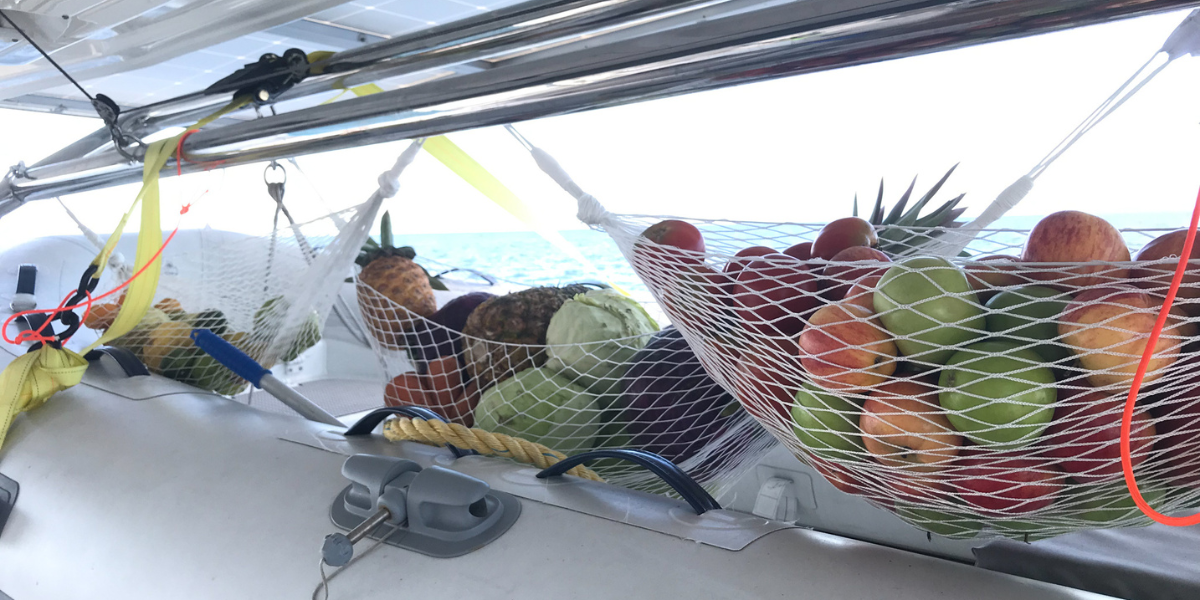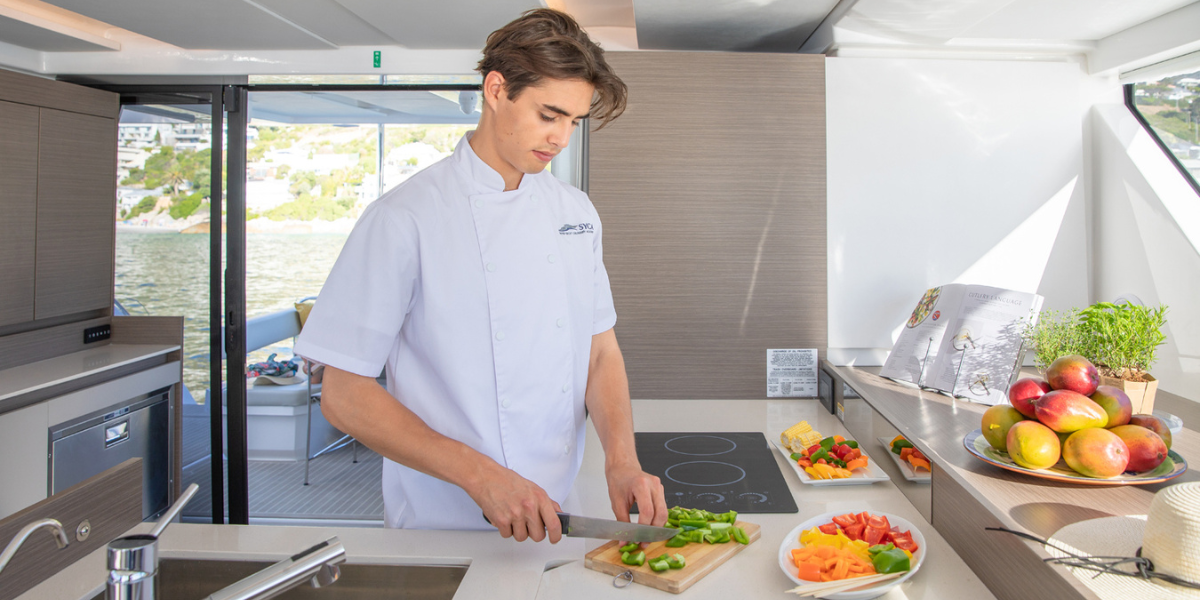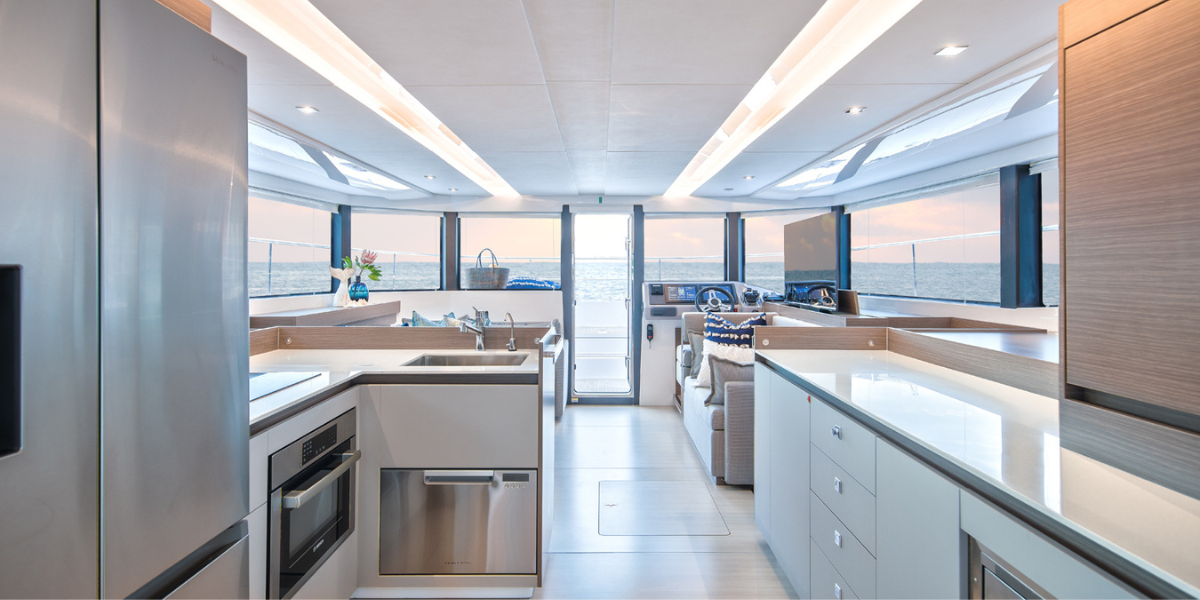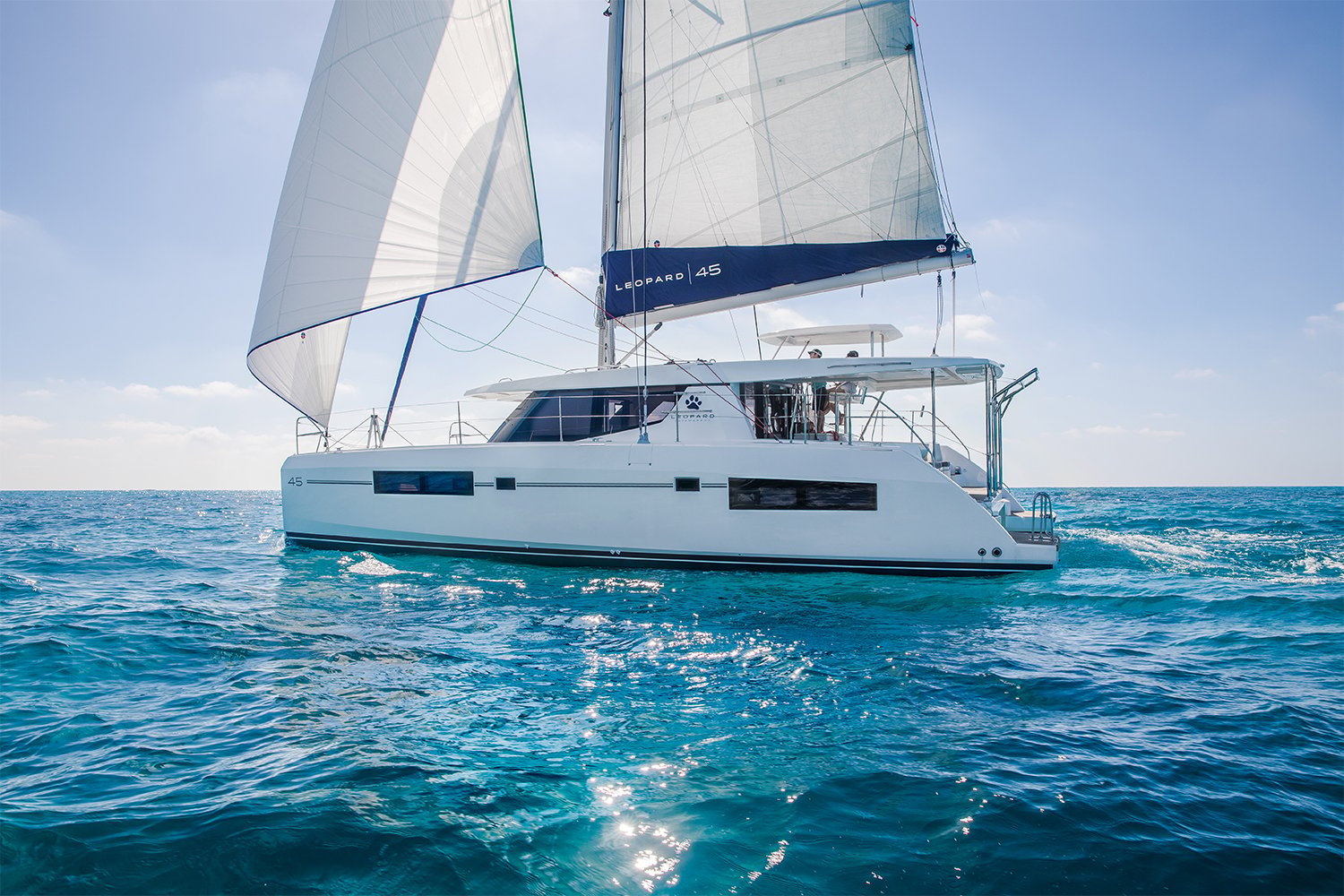While the galley on your Leopard is spacious and open, there is a limit to how much food and gear you can stash onboard. So, whether you're prepping for a week's vacation or a permanent blue water life, you'll need to pack and organize your galley well. According to veteran Leopard owners, with a little bit of thought and effort, you’ll be able to store everything your tastebuds desire — and find that one key ingredient when you need it.
A Place for Everything Yummy
The prime directive when organizing food and cookware is to keep the items you regularly use in the most accessible spaces.
“We store things by frequency of use, both food and equipment. Things we use more, we store in the floor. Slightly less-used, we put in the pantry, and least used we store elsewhere like under the beds. Same with equipment. Pots, pans, and appliances we use frequently, and we keep those close to the kitchen area.” - Todd and Erin, SV Sailing Symphony.
If you pack your shelves to capacity but have to empty half a cabinet to get to something you need, you won't be happy. Improvements that give better access and keep things easy to find are huge wins.
Mastering the Underfloor Storage
The underfloor spaces in your Leopard are expansive, with room for lots of food and supplies. But things get mixed up and moved around in big, open spaces. Hunting for that one can of black beans that migrated behind the pasta boxes gets old.
The other difficulty is that bad things can happen to food packages in marine environments. Cans rust and leak, spills on the floor get into the underfloor space, and open packages tip and spill. This can ruin other cans and boxed goods and make a mess.
“I put almost everything in the bilges. It helps keep things organized and prevents leaks and spills from spreading. And I organize stuff according to how it’s used: Canned goods in one bilge, spices, oils, pastes, etc in another. And yes, I have an entire bilge for baking stuff. I bake a lot.” - Adrienne and Jeff, SV Wind Therapy.
Use plastic storage containers to organize your underfloor space and make food types easier to locate. Grouping similar food items together allows you to find things more quickly and protect your stores from mishaps. Even if a can leaks, it won't spread its contents outside its storage container.
Choose quality containers with watertight lids that are clear enough to see through from the top and sides. Label the containers' tops, so you don't have to pull a container out to learn what’s inside. You don't need tight lids for everything, but airtight seals are always good in marine environments. Pack the containers like you are playing Tetris; make sure they fit together snugly into the space, so they don’t tumble around when the going gets rough.
Choose Space-Saving Cookware
Nesting pans, bowls, and containers save loads of space and let you pack clean, tight cabinets. Silicone tools that collapse and fold and soft-sided bakeware are easy to find. Everything from colanders and mixing bowls to spatter screens, folding dish racks and collapsible bowls and measuring cups save valuable under-counter space.
Look for nesting pans with removable handles that lock on for use and lids that stack into the set. Full-size pots and pans with domed lids take entire cabinets to store because you can't store them compactly. Stacking pan sets are better than full size, but nesting pans take a fraction of the space.
Don’t skimp on quality when buying space-friendly gear. Some folding tools look great on the shelf but don't do well in practice. A folding whisk lays flat and doesn't catch on your drawer latches, but what's the point if it comes apart in your hands when you use it?
Divide and Conquer Your Cabinets
Subdividing large cabinets gets those open spaces under control. Too much food in one open space is hard to search. Pulling out a basket of dry goods to get to something in the back of a closet is much easier than pulling out every single item on the shelves.
Square canisters with positive pressure lids are handy for frequently used dry staples. Bluewater cruisers put flour, sugar, rice pasta, and other daily use ingredients into easy-to-reach canisters and store larger quantities deep in the boat.
Avoid round canisters - they waste space and don't fill compartments well. You'll need to store empty containers, so look for stackable and nesting containers that eat up less space.
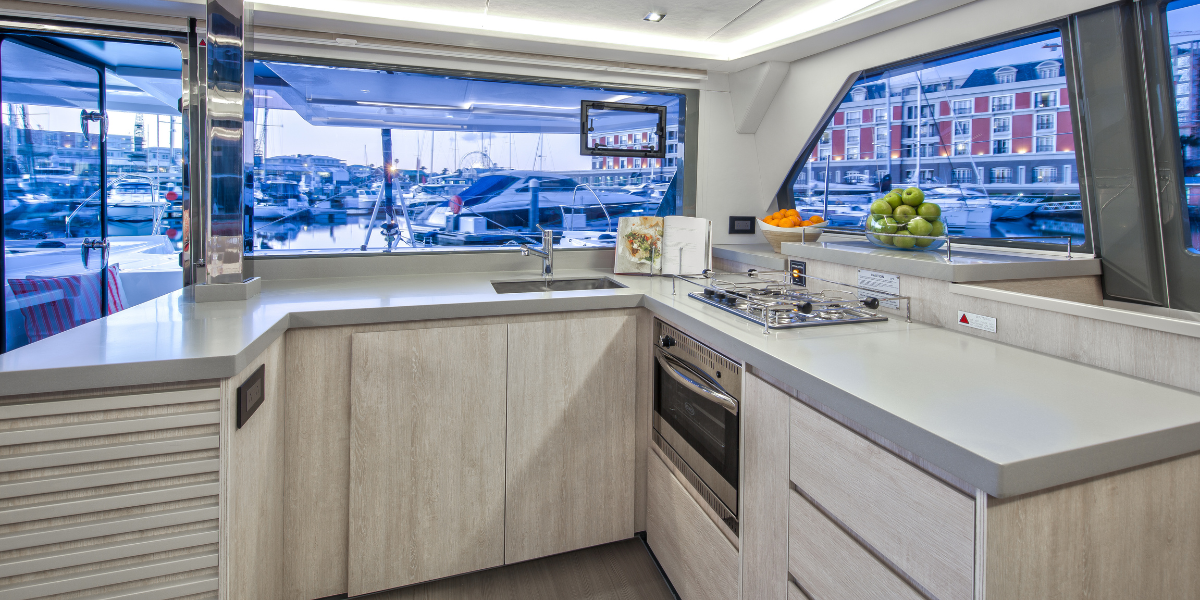
Lose the Boxes, Gain Some Space
Most food sold in groceries is over-packaged. Save room by removing the outside layers before bringing groceries to the boat. If you provision at a Costco-type bulk store, use your containers to break down and store your purchases. The smaller containers let you keep one large purchase in multiple spots on the boat. Open that giant double pack of cereal, get rid of the boxes, and store each bag separately. Put one package where you can reach it quickly and the other in deep storage.
“We use these storage containers. The small and medium sizes fit great under the floor, and the large lay down sideways nicely. Most dry goods we store in these and we've never really run out of places to put food. One set of these fills one under-floor storage area.” - Todd and Erin, SV Sailing Symphony.
Get rid of all the excess packaging before you leave the dock - even for a brief vacation or weekend. The more trash you get rid of before you come on board, the less you have to store and carry to shore on your vacation. And in foreign ports, boxes are notorious for carrying insects.
Game-Changing Hooks and Racks
Even if you have little cabinetry above the counters, there are plenty of clever places you can apply hooks, racks, sliders and other storage hardware to make your galley work for you. A well-designed spice rack that holds the bottles safely out of the way where you can read them is an excellent addition. Something as simple as a towel hook near the sink can eliminate an annoyance and make food prep more enjoyable.
Some of the deeper shelves on your Leopard may benefit from sliding racks or baskets. When looking for things in a deep cabinet, sliding a shelf out is easier than putting your head in the closet with a flashlight. Taking a single bin out to search is easy, and you can reorganize one basket at a time or by moving baskets.
While Leopards have plenty of spacious countertops, galley workspace is always at a premium. Dish racks and small appliances can take up countertop space needed for meal prep. Some owners have remodeled, shifting cabinets and adding counter space. Others employ simpler tricks, like a cutting board from IKEA that's a quick fit over the stove burners or adding inserts with a cutting surface to drop in the sink.
The big takeaway from every Leopard owner and cruiser we talked to is that your galley space is a work in progress. You may not find the perfect storage canisters or pan set right away. You'll always be on the lookout for better ideas and solutions. And your needs will change with how you use the boat, so what worked fine for a week may need refinement for a three-month cruise. With your Leopard, you've already got a leg up with large spaces and ample storage, so go out and be creative!
